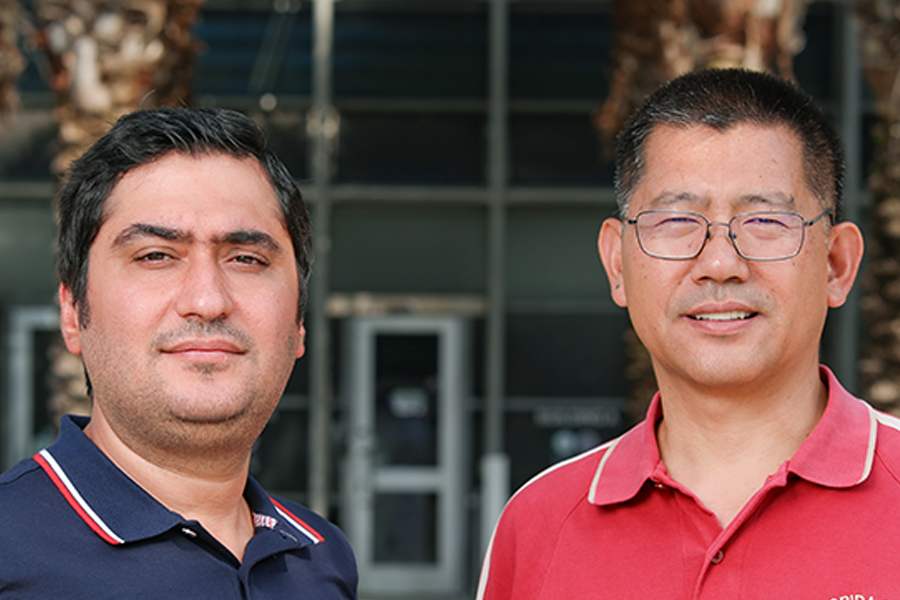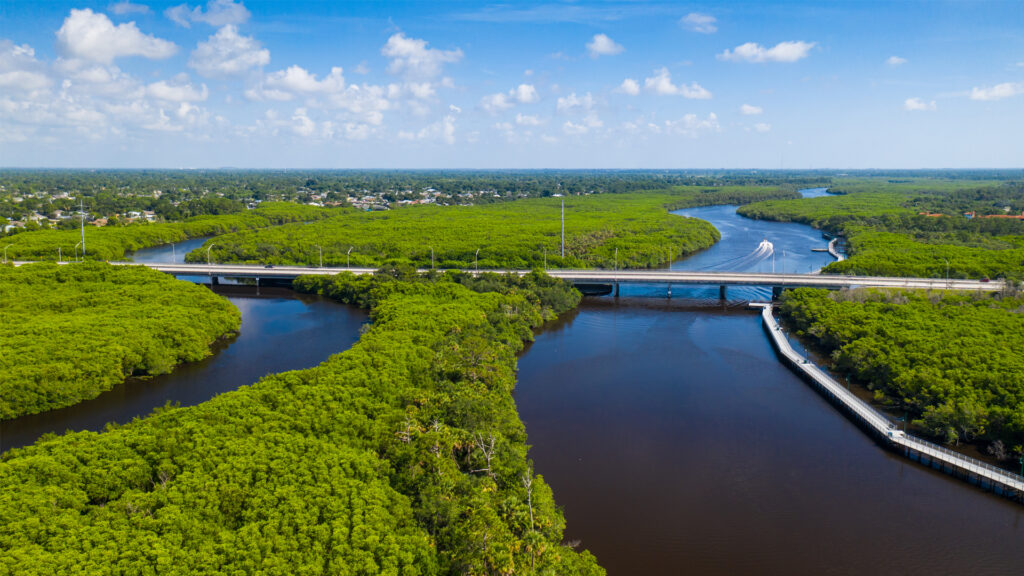By McKenzie Harris, Florida State University News
An interdisciplinary team of Florida State University researchers is set to tackle some of Florida’s most pressing environmental issues thanks to nearly $1.5 million in funding awarded by the U.S. Environmental Protection Agency.
The team will work together on three EPA-funded projects to examine South Florida’s waterways from three different perspectives: Pesticide and fertilizer transport, water pollution and threats to groundwater.
“One of our biggest goals with this research is to highlight how important collaboration is in tackling these water issues,” said Ming Ye, a professor in both the Department of Earth, Ocean and Atmospheric Science and the Department of Scientific Computing. Ye is leading a three-year, $400,000-project to develop a model-experiment integration, or ModEx, algorithm to better understand how applied pesticides move into and affect the ecosystem.

In model-experiment integrations, researchers combine computational modeling, such as surface water and groundwater modeling methods, with field and lab work that involves site visits and data collection.
South Florida is home to a multi-billion-dollar industry that supplies huge percentages of the state’s agricultural production, including all its sugarcane, almost half of its vegetables and nearly 40% of Florida’s citrus. In turn, many pesticides and fertilizers used are disseminated into the air and the area’s waterways, eventually making their way to the air we breathe and water we use.
After conducting dye-tracing experiments and collecting site-specific data like pH, oxygen and nutrient levels, the team will combine these observations with various models ranging from process space models to data-driven machine learning algorithms to determine which model is the most accurate in predicting the path of pesticides after application.
“All of these different modeling approaches are informed by the exact data of what’s happening at this site, allowing us to validate predictions against the monitored data we collect via dye-tracing and other methods — we’re calling it a modeling experimental frame,” Ye said.
The second project is led by Ebrahim Ahmadisharaf, an assistant professor in the FAMU-FSU College of Engineering’s Department of Civil and Environmental Engineering and Resilient Infrastructure and Disaster Response Center, or RIDER. Ahmadisharaf will use $400,000 to tackle water pollution over four years.
The team will develop and utilize machine learning to evaluate water quality in the St. Lucie estuary, part of Indian River Lagoon, and the Caloosahatchee estuary, both of which are connected to Lake Okeechobee, Florida’s largest freshwater lake. The research will distinguish the impact of natural and human-related effects on short-term and long-term water quality. They will also investigate further effects of poor water quality, including harm to wildlife like the federally protected manatee and contribution to destructive algae blooms.
“Understanding which factors in water pollution are dominant will help us determine what should be controlled first in addressing water pollution,” Ahmadisharaf said. “We’ll look at salinity readings, nutrient levels and which pollution factors are short-term versus long-term factors. Combining these observations with valuable insights from the community, such as if certain areas are limiting fertilizer use for some reason, give us a more complete picture of what’s happening and how to address it.”

The team’s final project is led by Ahmed Elshall, one of Ye’s former postdoctoral researchers and current assistant professor in the Department of Bioengineering, Civil Engineering, and Environmental Engineering at Florida Gulf Coast University. This project, funded for $650,000 over three years, addresses challenges of rising sea levels, changing precipitation patterns and rapid socioeconomic development, all of which threaten Florida’s groundwater and community resilience.
“A main goal of ours is to make our key findings accessible to the public and stakeholders so we all understand the direct and indirect impacts of decisions we make going forward,” Ye said. “For instance, we hope to help the Hydrologic and Water Quality System, a national watershed and water quality assessment online tool accessible to anyone, incorporate a pesticide module.”
Approaching complex, layered environmental issues such as water pollution requires an all-hands-on-deck strategy, as the study of water encompasses chemistry, mathematics, earth science, physics, engineering, biology and more. It also requires community involvement to achieve successful solutions.
“Collaboration and interdisciplinary research is necessary in confronting these problems that impact our health and the ecosystem so strongly,” Ahmadisharaf said. “We’re also working closely with federal agencies and state government organizations such as the South Florida Water Management District, Florida Department of Environmental Protection and the U.S. Geological Survey to fill local knowledge gaps and ensure our work is helping the community.”
To learn more about research conducted in the FSU Department of Earth, Ocean and Atmospheric Science, visit eoas.fsu.edu. Visit eng.famu.fsu.edu to read more about the FAMU-FSU College of Engineering and its research and rider.eng.famu.fsu.edu for more about the RIDER Center.
This piece was originally published at https://news.fsu.edu/news/science-technology/2024/08/19/precipitation-pesticides-and-pollution-fsu-researchers-earn-nearly-1-5m-in-epa-grants-to-study-south-florida-waterways/.
Sign up for The Invading Sea newsletter by visiting here. If you are interested in submitting an opinion piece to The Invading Sea, email Editor Nathan Crabbe at ncrabbe@fau.edu.


